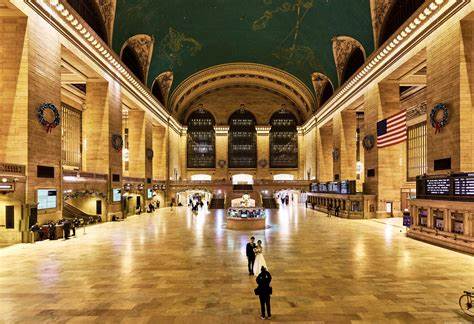New York City had two of the world’s Great Railroad buildings. GCT is filled with invisible wonders. It began because of a “Commodore” tied to ships and canals. See the invisible statue on 42nd and Park Avenue, the stairs, and the trainyard. Why are there acorns, ugly light bulbs, and depressions in several floors? Can you dance and play tennis inside? Learn secrets like how the two RR Meccas were linked before they were connected.
Our program begins with the birth of Commodore Corneilus Vanderbilt, on Statin Island, in the late 1790’s. He had almost no formal education, yet he built two great fortunes: from shipping and railroads.
His career saw railroads built to parallel the Erie Canal. He was given an opportunity to build a canal across Nicaragua, but a revolution there had him pass. He sold the last of his vast fleet after the death of his heir-apparent in the Civil War. He was fully invested in Railroads when, aged 30 years over the expect life span of the average adult, rivals attempted to take over his Railroad empire.
He fought back cleverly — with one massive move — and was able to purchase his rivals’ stock for pennies on the dollar to form the great NY Central Railroad System. Its headquarters was behind Grand Central.
There were three enormous buildings on 42nd street with a huge train yard behind it, extending to 56th street. Trains sped North on 4th avenue, nicknamed “the Avenue of Death.”
Tour the third of the NY Central’s “Terminals.” Go underground. See the tennis courts where the grand ballroom had been. Understand why the building has acorns everywhere — except for the magnificent, though backward, concourse ceiling.
It’s quite a trip to a “Terminal”.
